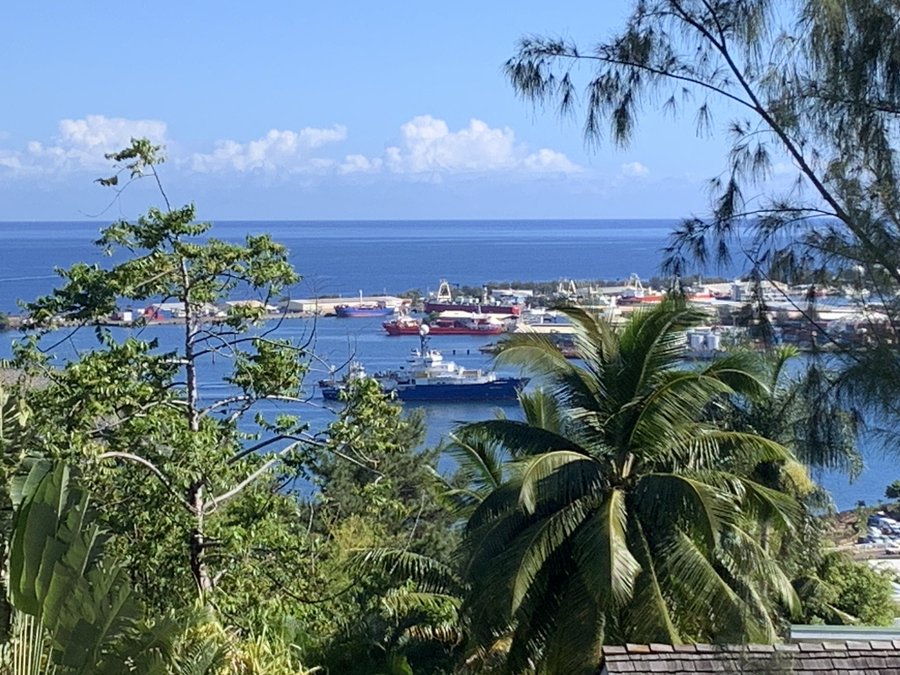
Our oceans are essential to human life. They provide food, medicine, renewable energy sources and information about climate change, among other things. As the oceans are imperative to humans, trace elements — or minor nutrients — are critical to the health of these huge bodies of water, along with related data measurement and analyses. That’s where the GEOTRACES program comes in.
Funded in part by the National Science Foundation’s Chemical Oceanography Program, GEOTRACES is a globally-funded, multi-million dollar initiative involving scientists from more than 35 countries whose mission is to map and understand the processes controlling the distribution of trace elements. The data is collected through research cruises around the world.
As part of this important study, two Texas A&M University researchers — Jessica Fitzsimmons, associate professor of chemical oceanography, and Chrissy Wiederwohl, instructional associate professor in oceanography — are spearheading a project that will lead a team of researchers on a research cruise to the southwestern Pacific Ocean. The cruise, called GP17-OCE, left Tahiti on December 1, bound for Punta Arenas, Chile, by January 25. Over the next 55 days, researchers — called “supertechs” — are hoping to collect about tens of thousands of liters of water to find out if and how trace metals such as iron, copper, zinc, nickel, manganese, cadmium and lead contribute to life in the waters of the region.

“This is a massive global-scale study,” Fitzsimmons said. “This will be the fifth ocean section that the U.S. has studied as part of GEOTRACES, and it’s exciting for a lot of reasons. Some highlights of what we’re going to be sampling are waters with some of the lowest photosynthesis rates anywhere in the global ocean. In these areas, you can see very clear water with nearly nothing growing in it, so we are studying how nutrients contribute to such low production.”
The team will also cross an area of the ocean that is severely understudied due to strong currents and poor operational conditions.
“But there are several bands of nutrients with different organisms growing as a result, and when these organisms are exported to the sea floor, they influence seafloor sediment geochemistry as well,” Fitzsimmons said. “Studying the interface between that modern ocean chemistry and the sediment record over the geologic past is another goal of the expedition.”
Studying the surface ocean on this cruise transect is also special because it is the birthplace of subsurface water masses that move throughout the rest of the ocean. Water masses are identifiable bodies of ocean water with a distinctive and narrow range of temperature and salinity and a particular density resulting from these two parameters.
“We hope to get the chemical fingerprints of various water masses, which is really important to us in this mapping quest as well,” Fitzsimmons said.
The researchers will also collect samples from a large unexplored area of hydrothermal vents along the Pacific-Antarctic Ridge. According to Fitzsimmons, a common theory in chemical oceanography is that these vents in the southern ocean are producing a disproportionately large supply of metals to certain parts of the surface ocean, allowing deep ocean sources to fertilize phytoplankton — microscopic organisms that photosynthesize and serve as the base of the aquatic food chain.

“These vents haven’t been studied very much because they’re difficult to get to, so we’re going to be one of the first cruises to capture the signatures of those fluxes,” Fitzsimmons said. “That’s a really big deal for my lab, because we specialize in hydrothermal vents. Additionally, as we come around the other side of South America, there’s a water mass called the Pacific Deep Water that carries iron from hydrothermal sources that we are going to map right before it’s going to upwell to the surface. That’s an important goal: to map how much iron is in the current before it reaches the surface and potentially fuels photosynthesis.”
“They’re basically going from the oldest water in the ocean to the newest water, in the sense of when the water was last in contact with the atmosphere,” Wiederwohl added.
Fitzsimmons said while she is interested in the cruise’s findings from a phytochemical perspective, Wiederwohl is interested in finding out about the Southern Ocean’s physical oceanography, currents and water masses.
“My part of the project is leading the broader impacts outreach component, which is building a virtual reality module of the ship. We are collaborating with Andre Thomas and the Learning Interactive Visualization Experience (LIVE) Lab in the School of Performance, Visualization and Fine Arts,” Wiederwohl said. “A LIVE lab graduate student will be aboard to begin building the module and capture life at sea.”
Wiederwohl hopes the module will be completed by the end of the spring semester.
Along with Fitzsimmons, who is serving as co-chief scientist on the expedition, the cruise also includes current oceanography graduate students Yerim Kim, Kristie Dick and Rebekah Bogdanoff, as well as 2021 Texas A&M oceanography former student Dylan Halbeisen.
“There’s a massive Texas A&M presence in this project,” Fitzsimmons said. “And we are so excited.”

